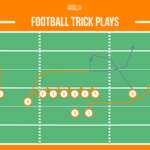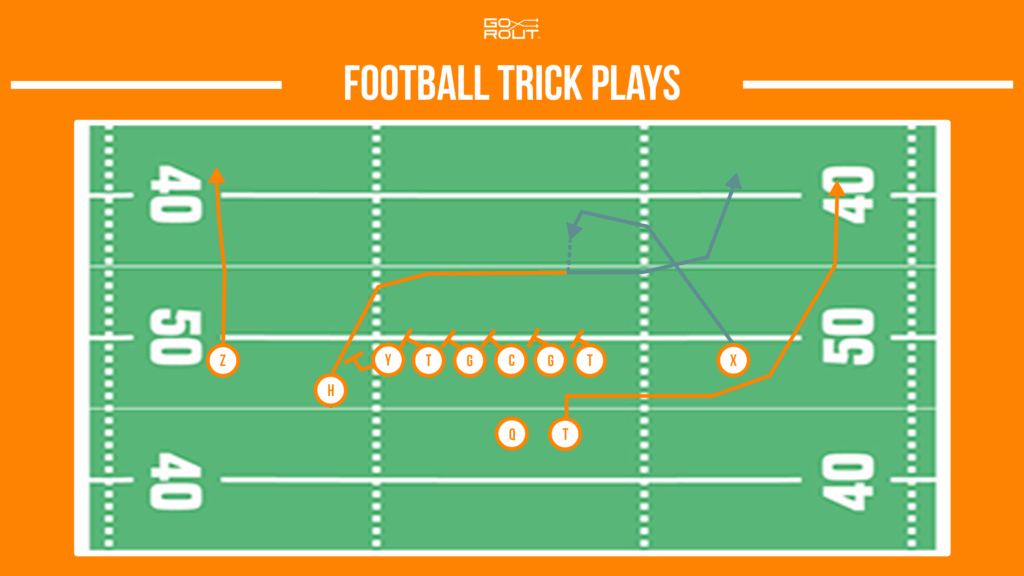Football Play Sheet: How GoRout Transforms Play Calling
Reading Time: 10 minutes
Reading Time: 10 minutes
Football games move fast. Every second matters when you’re calling plays.
A football play sheet helps you keep your calls organized. However, paper versions can slow things down and open the door for mistakes. GoRout flips the script, turning old play sheets into a digital, real-time system that speeds up communication and keeps your team in sync.
With GoRout, you don’t waste time flipping through paper or worrying about missed signals. You send plays instantly to players using wearable tech, so your strategy stays clear and secure.
This change gives you more control over tempo and cuts down on confusion. You can adapt quickly to whatever the game throws at you.
Key Components of a Football Play Sheet
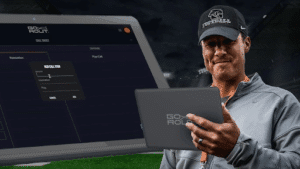
A football play sheet gives you a quick, organized way to call plays without digging through your full playbook. It keeps offensive, defensive, and special teams options in one spot so you can react fast.
Most play sheets break things down into categories. You’ll usually see formations, play types, and situational calls in sections that make it easy to scan under pressure.
A simple layout often includes:
| Component | Purpose | Example Use Case |
| Formation | Player alignment on offense/defense | Trips Right, 4–3 Defense |
| Play Type | Run, pass, or coverage scheme | Inside Zone, Cover 2 |
| Adjustments | Motion, shifts, or blocking changes | Motion Left, Slide Protection |
| Situational Calls | Down, distance, or clock management | 3rd & Short Run, 2-Min Drill |
| Special Teams | Kickoff, punt, or field goal strategy | Fake Punt, Onside Kick |
You can group plays by down and distance. Maybe short-yardage runs go in one box, while two-minute drill passes go in another. This structure helps you find the right call without overthinking.
Modern football playbook software lets you organize these components digitally.
You can adjust plays, track usage, and streamline communication with your players before and during games. When you design or draw football plays, including these pieces helps your sheet work as a fast, reliable sideline guide.
Download GoRout’s Free Football Situational Sheet
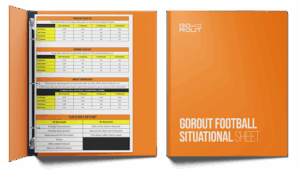
A prepared sheet to quickly reference critical game situations ensures your team is always prepared for the next play. Our team at GoRout took some time to help you prepare for in game decisions with our Situational Sheet.
Whether it’s fourth-down strategy, clock management, or special teams scenarios, these sheets provide insights and guidance to expedite decision making and help you make the right choice. There are two options, one for high school and one for college, each tailored to the specific rules and game situations of the respective level.
Download GoRout’s free football situational sheet today.
Creating a Football Play Call Sheet for Different Levels of Play

A well-designed football play call sheet is key for success on the field, but what works for a pro team won’t work for youth football.
Here’s how to tailor your call sheet to the players you’re coaching.
Youth football: Keeping it simple and visual
If you are a football coach of youth players, keep your call sheet clear and simple. Use basic formations, a small set of plays, and lots of visuals.
Kids respond better to symbols, colors, or one-word calls than longer, complex terminology. Simple layouts help you teach during practice, too.
Pair your sheet with football practice plans so you incorporate the same terms and plays in practice to prepare for games. It builds confidence and cuts down on mistakes on game day.
High school football: Balancing complexity with clarity
High school players can handle more variety. Organize your sheet by down and distance, field position, and situational plays.
Many coaches make sections for run, pass, and special teams. A clear structure lets you call plays faster, especially with a short play clock.
Color-coding or grouping by formation can also save time under pressure.
College football: Advanced schemes and adaptability
College play sheets need to pack in more details because defenses adjust on the fly. You’ll want scripts for opening drives, red zone packages, and two-minute drills.
Flexibility is big here. Coaches often throw in some alternative plays for different defensive formations. Keeping notes on matchups, like which cornerback to go after, can guide your calls in key moments.
Professional level: Maximizing efficiency and precision
At the pro level, your call sheet has to be comprehensive and efficient. Organize by situation: third downs, goal line, sudden change, and clock management.
Use tight layouts with shorthand that your staff and players already know. Every second matters, so your sheet should let you find and relay the right play fast.
Communicating Football Plays Effectively With Your Team
Clear communication keeps players on the same page and cuts down mistakes in those wild, fast-paced moments. As a coach, you need a system that gets instructions out fast and leaves no room for guesswork.
Clarity and speed can make or break a play. Sometimes, that’s the difference between a touchdown and a busted drive.
Digital wristbands make life easier. Instead of hand signals or paper sheets, you can shoot plays right to each player’s device.
That means your team reacts faster, lines up right, and stays locked in even when the pressure’s on. There’s less scrambling and more focusing.
It’s just as important to train your players to read and respond quickly. Practice should include reps where players check their wristbands, recognize their role, and go without second-guessing.
Repetition breeds confidence. The more they do it, the less they hesitate on game day.
Breakdowns usually pop up when someone misses a signal, lines up wrong, or the snap count gets muddy. You can avoid these by keeping your play language simple and consistent.
When competition heats up, every second counts. Using a solid team communication app helps you cut wasted time and keep your strategy under wraps.
Faster delivery means fewer huddles, smoother execution, and a better rhythm for your offense.
How GoRout Revolutionizes Football Play Calling
GoRout changes how you build your play sheets and send plays by putting clear instructions right at your players’ fingertips.
Its football play-calling system focuses on faster communication, fewer mistakes, and more efficient use of practice and game time.
Check out these testimonials and case studies to learn more.
GoRout Scout

GoRout Scout gives you an easy way to run practices without wasting time on paper scout cards or long explanations.
You upload your scripts via the web app, send instructions using the mobile app, and players instantly see the plays on their digital wristbands.
That means less standing around and more actual reps. Instead of shouting corrections, you can tweak plays in real time.
Players stay engaged because they always know what’s next. Coaches often say they get two to three times more reps per session with this tool.
Scout works for drills like 7-on-7, walkthroughs, or special teams. You can even use it for hotel walk-throughs or summer camps. The devices work anywhere, no Wi-Fi needed.
Bright screens and weatherproof design make them reliable in any condition.
Key benefits of Scout:
- Faster practice tempo
- Instant adjustments during drills
- More reps in less time
- Clearer communication for every position
Check out how a football practice device can improve your training sessions.
GoRout Gridiron
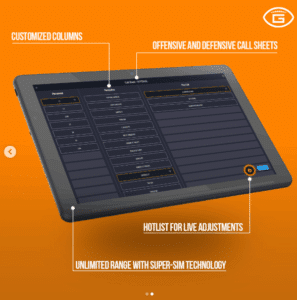
GoRout Gridiron brings the same idea to live games. Instead of hand signals or boards, you send secure play calls right to football play call wristbands.
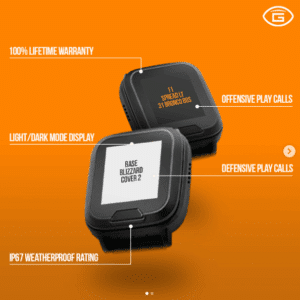
Each player feels a vibration and sees the encrypted play on a small screen, so nobody misses the call. It keeps your strategy private and stops opponents from stealing signs.
It also speeds up tempo since plays reach all players at once without a huddle. With Gridiron, you can:
- Send plays in seconds
- Keep opponents guessing
- Reduce miscommunication under pressure
- Support every position on the field
Because calls arrive instantly, you stay flexible with subs, injuries, or last-minute changes. That kind of responsiveness is a real edge when every second counts.
How To Transition To GoRout Football Play Calling
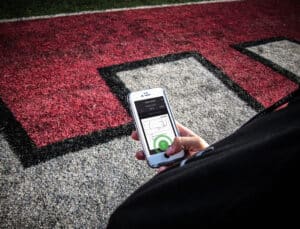
Take a hard look at how you communicate plays and jot down where things get delayed, confused, or lost in translation.
It gives you a sense of where GoRout can actually help. Sometimes, you don’t realize how much time slips away until you track it.
Set up GoRout for your team’s level. Whether you coach youth, high school, or college, tweak practice scripts and play cards so they fit your players’ tempo.
Train coaches and players before you try it in a live game. Start with short practice sessions, then move to full scrimmages.
Keep things simple at first. People need time to get used to a new system, and that’s totally normal.
Quick checklist to guide your transition:
- Review your current play sheets
- Upload and organize digital scripts
- Run short practice installs
- Expand to full-team drills
- Track reps and communication speed
Game Strategy And Planning With Football Play Sheets
A well-organized play sheet gives you a clear roadmap to success, no matter what your opponent throws at you.
Pre-game preparation and scripting plays
You set the tone for the week by building a clear plan. A football play sheet lets you script plays for different downs, distances, and field spots so you’re ready for anything.
Film study and scouting shape which plays you highlight. You can prep for two-minute drills or mix in 7 on 7 football practice blocks to sharpen timing and spacing.
Key benefits of scripting:
- Faster decision-making under pressure
- Clear reminders of preferred strategies
- Better use of the clock in critical moments
In-game adjustments and halftime updates
Defenses adjust on the fly, and you’ve got to react. Your play sheet gives you quick options to counter changes in coverage, pressure, or tempo.
At halftime, mark what worked and what didn’t. Update the plan, shuffle your calls, and keep players feeling confident for the second half.
A simple table can help track success:
| Situation | Call | Result | Adjust |
| 3rd & Short | Inside Run | 4 yards | Keep |
| 2nd & Long | Play Action | Incomplete | Swap |
| Red Zone | Quick Slant | Touchdown | Repeat |
Post-game analysis and refining the play sheet
After the game, compare your sheet to what actually happened. Did your strategies match up with what the opponent did?
Look at clock management too. Did it play out like you planned? Over time, you’ll build a play sheet that fits your team and keeps you a step ahead.
Best Practices For Organizing Your Football Play Calling Sheet
By applying a few best practices, you can turn a chaotic binder into a clear, strategic tool that guides your team to victory.
Categorization for quick access
Keep your call sheet simple and easy to scan. Split plays into clear buckets for run, pass, special teams, and situational calls.
This way, you find the right play faster when the clock’s ticking. Consistent templates help you stay organized, and everyone knows where to look.
Prioritizing plays by situation and opponent tendencies
Group plays by down and distance, field position, or red zone. That keeps you from wasting time flipping through stuff that doesn’t fit the moment.
Rank plays by confidence. Use symbols or highlight colors to mark your top calls so you can spot them instantly.
Using data and analytics to guide play selection
Review game film and practice results to see what’s working. Track which plays succeed against different defensive schemes and update your sheet with the results and any notes.
A simple table helps you stay organized:
| Situation | Play Type | Notes |
| 3rd & Short | Inside Run | High success rate |
| Red Zone | Quick Slant | Works vs. press |
| 2-Minute Drill | No-Huddle | Keeps tempo fast |
Keep updating your sheet with what you learn. That’s how you stay sharp and ready for whatever comes your way.
The Limitations of a Traditional Football Play Sheet
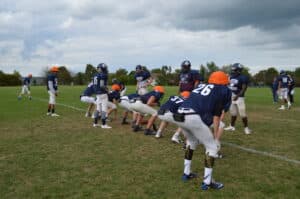
If you’re still using old-school paper play sheets, you know the problems. In a game of seconds, these traditional methods can create huge headaches, from slowing down your offense to opening the door for critical errors.
Time delays and miscommunication risks
If you rely on printed sheets or sideline signs, each second feels huge. Scanning a football playbook or signaling across the field slows you down.
These small delays can create confusion or lead to running the wrong play.
Another issue is visibility. Hand signals or sideline signs aren’t always clear, especially in loud stadiums. It opens the door for errors and wasted plays.
Difficulty adapting quickly to opponent adjustments
Defenses adjust fast, so you need to respond just as quickly. Traditional sheets make switching plays on the fly tough because you have to find the right call under pressure.
If your opponent disguises coverages or changes tempo, you might only have seconds to react. A static sheet can’t keep up.
Physical limitations: paper, weather, and human error
Paper sheets really aren’t made for the elements. Heat, rain, or sweat can smudge ink and make it hard to read. Laminating helps a bit, but it’s bulky and not a perfect fix.
There’s also the human element. Misreading a column, calling the wrong line, or mixing up sections can wreck a drive.
Sometimes, opponents even exploit weaknesses by sign stealing.
Why Digital Football Play Sheets Are Getting Popular
You’ve probably seen more teams ditching paper call sheets lately. Digital football play sheets make it way faster and easier to share plays, update strategies, and keep everyone on track.
Coaches don’t have to shuffle paper during crunch time anymore. The shift started with tablets and apps, but now wearable technology delivers plays straight to players.
Instead of relying on hand signals or boards, you send calls instantly and securely. That means fewer mistakes.
With digital tools, you can organize plays by down, distance, or field position. Advanced systems like GoRout let you upload play cards, preview designs, or attach an image or PDF for quick reference.
It makes it easier to adjust when the defense shifts or when you need a last-minute change.
- Speed: Send plays in seconds instead of yelling or signaling.
- Clarity: Players see their exact role on a screen or wristband.
- Security: Digital calls reduce the risk of opponents stealing signals.
- Efficiency: Practice sessions run smoother with more reps and less downtime.
As football coaching apps and football coaching software get better, digital play sheets offer more than convenience.
Modern sports coaching technology lets you move beyond paper and create a streamlined process that matches the game’s fast pace.
Conclusion: The Future Of Football Play Sheets Is Digital
Paper call sheets have been a staple in the game, but they’ve become outdated. With digital systems like GoRout, coaches send plays straight to every player’s device in seconds.
That keeps communication sharp and secure. No more wondering if the signal got through or not.
Digital play sheets also cut down on sideline chaos. Instead of hunting through binders, you upload your plays once and tweak them live as the game unfolds.
This change lets you focus on strategy.
So what do digital play sheets offer?
- Faster communication: no huddles or waiting around
- Fewer mistakes because players see the call right there
- More flexibility to change things up instantly
- Better security so your signals stay private
Coaches in Texas and the NCAA have already put these tools to the test. They’ve proven themselves under real game pressure.
As more states and leagues give the green light to wearable tech, digital play sheets are on their way to becoming the new normal.
If you want your program to keep up, now’s a good time to check out GoRout. It was built by coaches, for coaches, and it’s meant to make play calling simple, fast, and reliable.
Take a look at GoRout to learn more or get a quote for your team.

